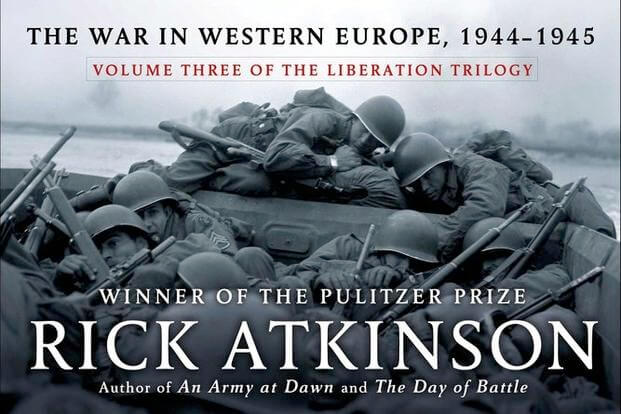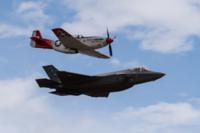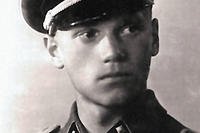"The Guns at Last Light: the War in Western Europe, 1944-45" (Henry Holt), by Rick Atkinson
Fruitless combat in places like Vietnam, Iraq and Afghanistan can evoke a certain wistfulness for World War II. Often characterized as our last "good war," it combined a sense of purpose with universal public support and ended decisively with good triumphing over evil.
The Western European phase of America's war against the Nazis lasted a mere 11 months, from D-Day to Germany's surrender, but the dramatic events, the leading figures and the carnage dwarf anything that our military has seen in the nearly 70 years since.
That epic campaign comes alive in "The Guns at Last Light," the third and final volume of Rick Atkinson's magisterial "Liberation Trilogy." The first book covered the North Africa campaign and won the Pulitzer Prize for history; the second carried the story through the fighting in Italy.
The latest volume plows more familiar turf, beginning with the landings on Normandy's beaches and moving on to the liberation of Paris, the Battle of the Bulge and the final push into Germany.
Even though we know how it ends, this 850-page military history captivates the reader with the high drama of a spellbinding novel and a cast of characters that a master storyteller would be hard-pressed to invent.
At the highest echelons, we see Supreme Commander Dwight Eisenhower's struggle to manage a war while coping with the egotism and insubordination of British Field Marshal Bernard Montgomery and the insufferably vainglorious Charles De Gaulle, leader of the Free French. The many generals profiled by Atkinson range from the courageous and beloved paratroop commander James Gavin to the parsimonious and universally reviled logistics chief John Lee.
The author's talent as a military historian shines brightest, however, when the reader is put in the midst of battle and the book provides a sense of what it was like for the GIs and Tommies to take on the vaunted Wehrmacht. There is courage and endurance aplenty, from the sniper-laden hedgerows of Normandy to the rugged, wintry terrain of the Ardennes. It was there that U.S. troops withstood Adolph Hitler's last-roll-of-the-dice attack in what became known as the Battle of the Bulge.
Atkinson captures the sights, sounds and smells of the battlefield. The odors that drifted over Normandy, for example, combined cordite with the stink of dead cows. The vicious cycle of atrocities and reprisals begins soon after D-Day when an SS Panzer unit methodically slaughters scores of Canadian prisoners. British troops responded in kind, with a platoon commander's daily orders noting, "NPT below rank major": no prisoners to be taken below the rank of major. Atrocities culminated in the Malmedy massacre a week before Christmas in the Ardennes, but never approached the scale that was routine on the Eastern Front.
Non-battle casualties take a crushing toll, whether from trench foot and combat exhaustion (formerly known as shell shock) to desertion and the rising incidence of venereal disease that inevitably followed the issuance of 48-hour passes to Paris.
Atkinson's accounts of the war's final days and its aftermath are emotionally gripping, from the liberation of concentration camps to the repatriation of more than 82,000 dead soldiers whose families elected to have their remains brought back to America; the personal effects of the fallen also were carefully tended to and delivered to loved ones.
The history detailed in this book has been recounted many times, from Cornelius Ryan's marvelous accounts of D-Day and Operation Market Garden to more recent works by historians Max Hastings and Anthony Beevor. More is sure to be written, but it's hard to imagine a more engrossing, dramatic, fair-minded and elegantly written account of these 11 months that changed the course of history.









